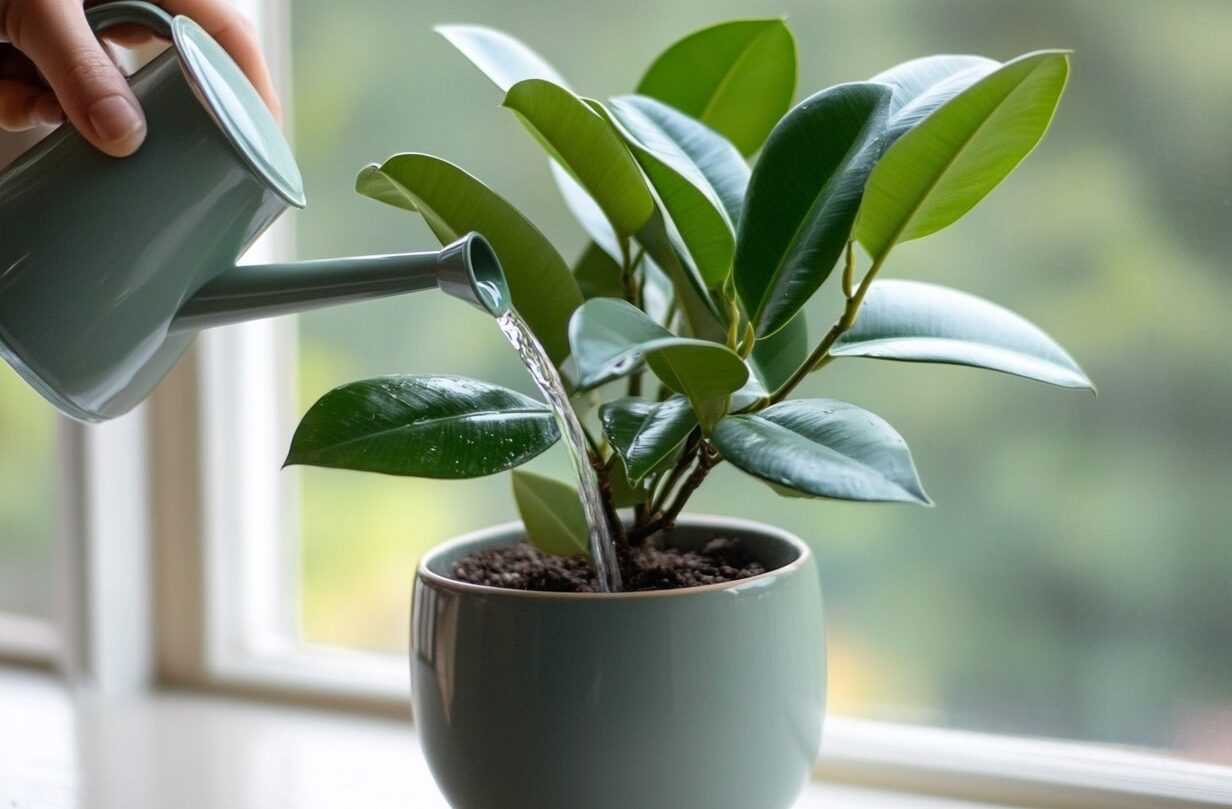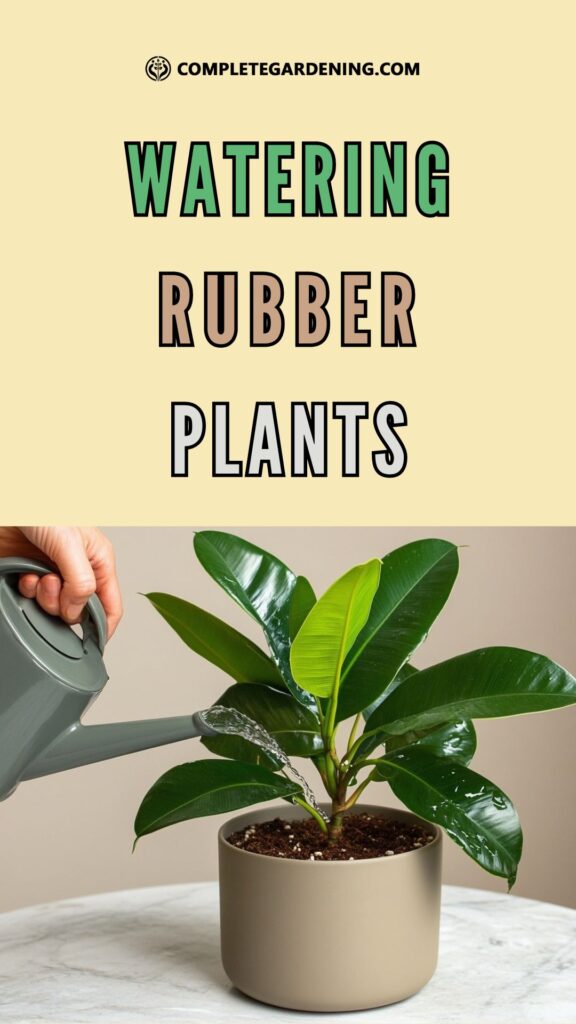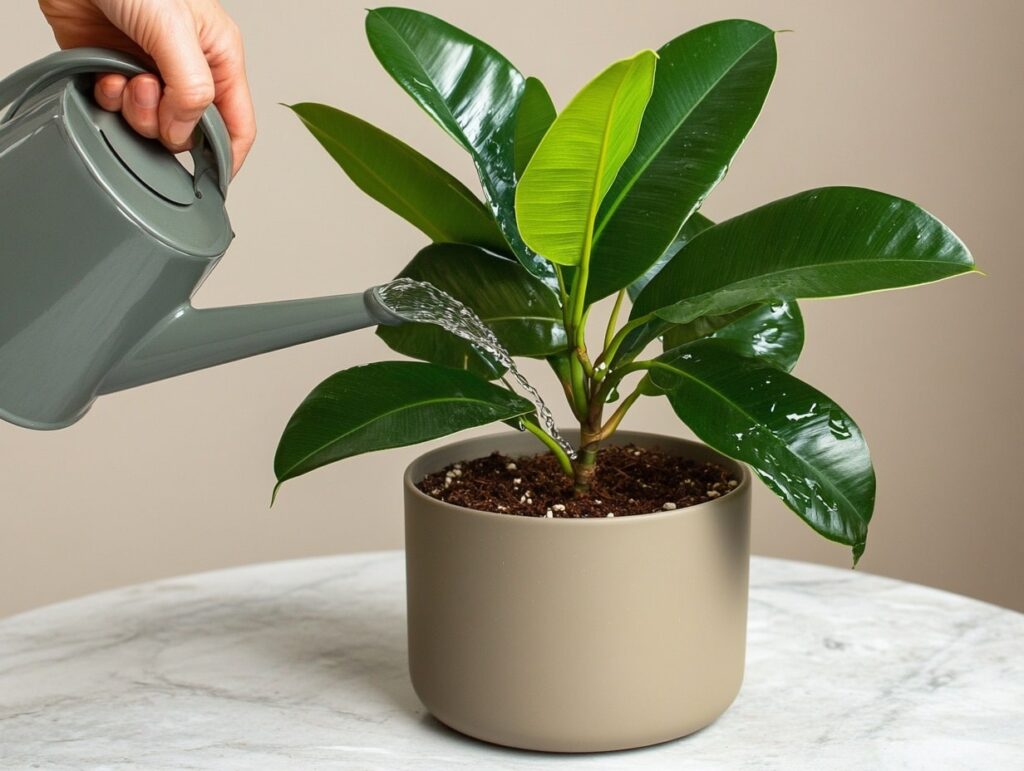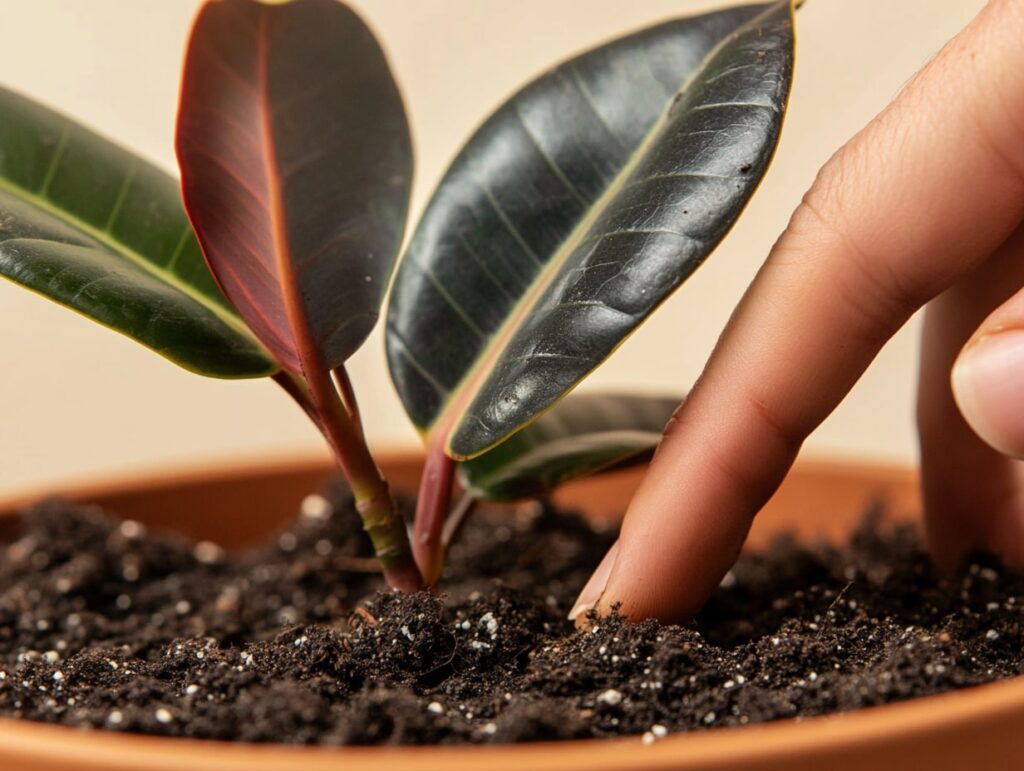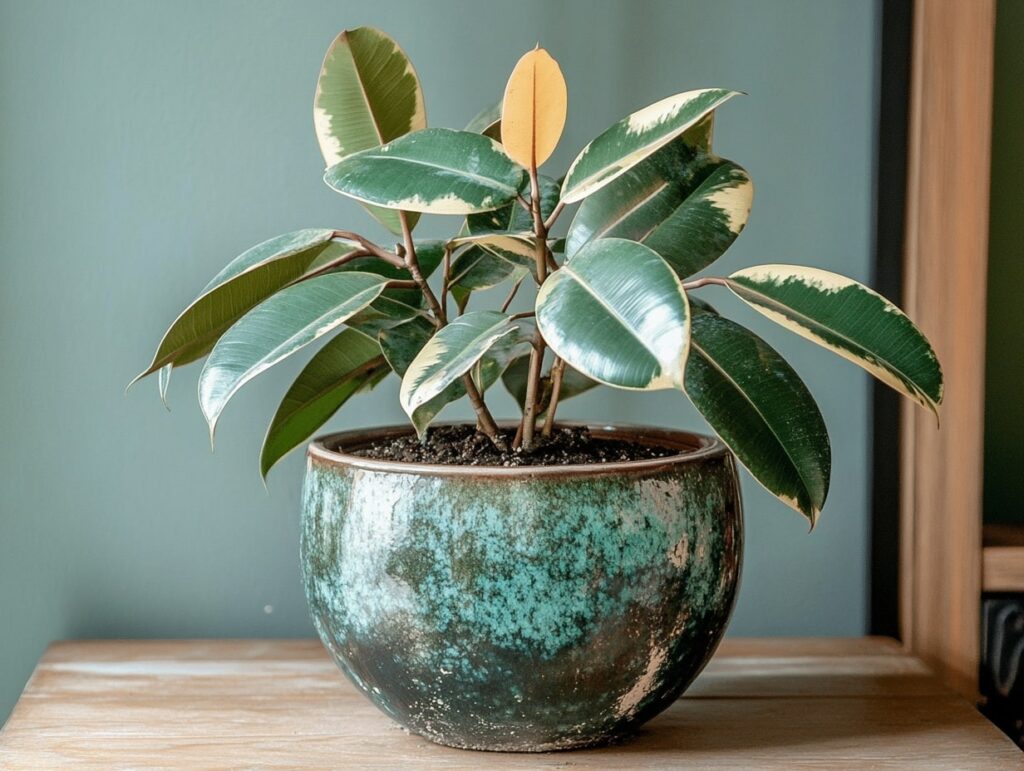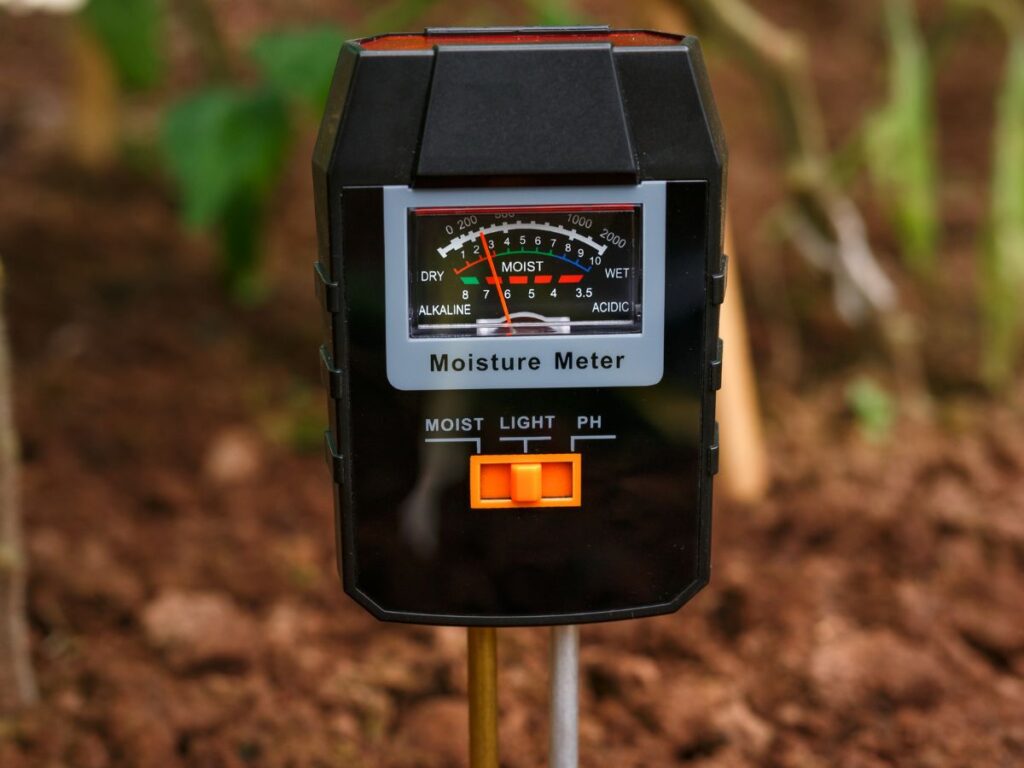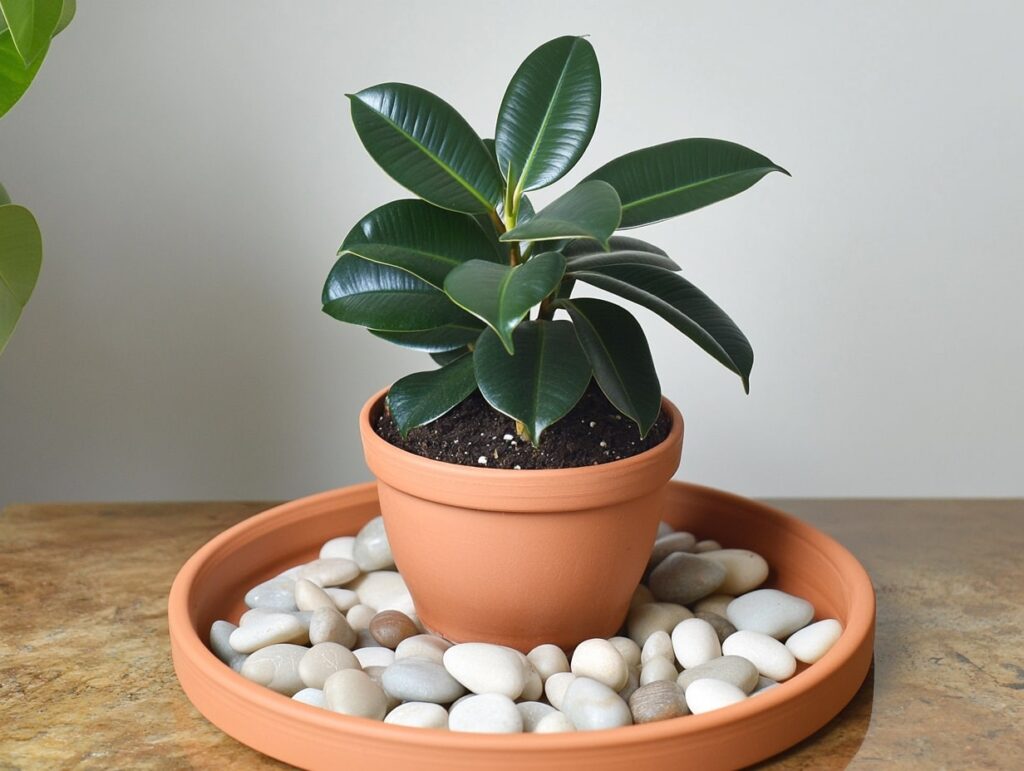Watering a rubber plant might seem like a mundane task—a quick pour of water and you’re done. But if you look closer, it’s anything but trivial.
It’s a subtle dialogue between you and a living organism that can’t speak but communicates volumes through its leaves and soil.
The act of watering becomes a study in attention and restraint, a practice that teaches you to read signs that aren’t immediately obvious.
It’s about understanding that too much care can be as harmful as too little, and that the right amount changes with the seasons, the environment, and even the plant’s own growth cycle.
In a way, watering a rubber plant is a microcosm of how we navigate complexities in life: observing, adjusting, and finding balance.
Executing the Watering Process
When watering your rubber plant, it’s important to follow a consistent routine and keep an eye on soil moisture levels to ensure optimal health. Both steps are crucial to maintaining its lush green leaves and overall well-being.
Step-by-Step Watering Guide
Start by ensuring your rubber plant is in a pot with drainage holes. This prevents water from collecting at the bottom, risking root rot. When you water, pour directly onto the soil surface until it starts to drain from the bottom.
Water moderately, allowing the top inch of soil to dry out between sessions. This keeps the roots from sitting in excess moisture. It also mirrors a natural cycle, helping the plant thrive. Use lukewarm to room-temperature water to avoid shock.
To determine the amount, about one cup of water is generally sufficient for small to medium pots. Adjust as necessary, depending on your plant’s size.
If your plant is outdoors or in especially dry conditions, consider watering more frequently to maintain soil moisture levels.
Monitoring Soil Moisture Levels
Keeping track of soil moisture is vital to avoid both overwatering and underwatering. Insert your finger about an inch deep into the soil. If it feels dry, it’s time for a drink.
For more precision, consider using a moisture meter. These devices provide accurate readings of your plant’s needs.
Keep a regular watering routine but adjust for changes in season or humidity. During warmer months, plants generally need more water.
In winter, you may need to water less frequently as growth slows down. Always remember: a consistent watering process is key to a healthy rubber plant.
Common Mistakes in Watering
When it comes to watering rubber plants, both overwatering and underwatering can cause issues. Understanding the right balance is key to maintaining their health and vibrancy.
Overwatering and Its Consequences
Rubber plants do not require a lot of water and overwatering is a frequent mistake. Excessive moisture can lead to root rot, which is a serious condition that damages the plant’s health.
This issue typically arises when water is applied too frequently or when drainage is inadequate.
To avoid this, you should ensure the pot has proper drainage holes. Always allow the top inch of soil to dry before watering again.
Using a moisture meter can also help you monitor soil moisture. Regularly check the plant’s leaves for yellowing, as it can be a sign of overwatering.
Underwatering and How to Avoid It
Underwatering is another common pitfall. When rubber plants don’t receive enough water, their leaves may become dry and brittle. This can result in leaf drop due to dehydration. Signs to watch for include leaves curling or turning brown at the edges.
Try maintaining a consistent watering schedule, checking the soil regularly. Stick your finger into the soil about an inch deep; if it feels dry, it’s time to water.
Another tip is to increase humidity around the plant by misting it or using a humidity tray with pebbles and water. These steps can help prevent issues associated with underwatering.
Long-Term Care and Maintenance
When caring for rubber plants in the long term, it’s important to adjust your watering routines with the changing seasons. Additionally, understand how the plant’s fertilizer needs interact with its watering schedule for optimal growth.
Adjusting Watering Patterns Seasonally
Rubber plants require differing amounts of water depending on the time of year. During the growing season, which typically spans from late spring to early fall, these plants might need water more frequently. You should aim to keep the soil consistently moist during this period.
In contrast, rubber plants enter a dormant phase in the winter months. During this time, reduce watering significantly. Allow the top inch of soil to dry out before watering again to prevent root rot and overwatering issues.
Fertilization and Watering Interplay
The balance between fertilization and watering is crucial. During the growth season, apply a balanced liquid fertilizer every four weeks. This ensures that your rubber plant receives all necessary nutrients while maintaining regular watering practices.
Reducing fertilization is advisable during the dormant season, much like watering. Over-fertilization can lead to salt buildup in the soil, harming your plant. Watering after fertilizing helps distribute the nutrients evenly without accumulating excess salts.
Caring for a rubber plant isn’t just about following a set of instructions; it’s about developing a relationship rooted in observation and adaptability.
The nuances of watering—the timing, the amount, the seasonal adjustments—mirror the complexities we face in broader contexts. It’s a reminder that even the simplest actions can have profound effects when done with mindfulness.
By tuning into the needs of your rubber plant, you’re not just nurturing a piece of greenery; you’re cultivating a habit of attentiveness that can permeate other areas of your life.
In the end, the health of your plant reflects the care you’ve invested, serving as a living testament to the virtues of patience and balanced effort.
